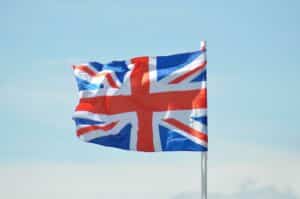
Investors Betting on Bigger Hikes by BoE after Inflation Numbers
On Wednesday, the 2-year bond yields of the British government reached their highest level in almost 14 years when the global financial crisis had been at its peak.
This was because the inflation data for the United Kingdom turned out to be stronger-than-expected, thereby raising bets on further interest rate hikes by the Bank of England (BoE).
Inflation data
According to official data, the consumer price inflation had stood at 9.4% back in June and it rose to 10.1% in July.
This was greater than all economists’ forecast and the higher this figure has been since February 1982. There was a more than 30 basis points increase in 2-year gilt yields at 1216 GMT, as they reached 2.453%.
This was greater than a previous high they had touched on June 21st and took them to their highest level recorded since November 2008. At 1434 GMT, they were trading at 2.38%.
Financial markets have bet that there would be a 50 basis points increase in the interest rate by the Bank of England (BoE), which would see it reach 2.25%.
This would be the second biggest increase of the British central bank, which is expected to come at the end of its meeting next month on the 15th.
There is just a 13% chance that there will be a 75 basis points increase in the interest rate by the Bank of England in September’s meeting.
Interest rate hikes
The financial markets have also priced in total interest rate hikes of 200 basis points by the Bank of England (BoE) till May of next year.
This would mean that the total interest rate would hit a peak at 3.75%. Another interest rate hike of 155 basis points was priced in by the markets on Tuesday by March 2023, when they believe they will peak.
There was a 15 basis points increase in the benchmark 10-year bond yields to reach 2.28%. Moreover, the British debt prices were underperforming US and German government bonds.
Gilt yields
The spread between 10 and 2-year gilt yields is often considered a signal of an economic recession. This was the most negative, or inverted it has been after June 2008.
That was also when the British economy had been entering a recession due to the global financial crisis and had stood at about minus 14 basis points.
However, it is expected that yields of 10-year gilts will rise more as opposed to two-year yields in the rest of the year.
This is because of the increase in the cost of living that will pressurize the government into providing more financial support in the short term.
It appears that 10-year gilt yields will increase to 3% by the time the year comes to an end, particularly if the BoE starts selling the gilt holdings that it accumulated during the pandemic the next month.
The total gilt holdings that had been accumulated stand at 844 billion pounds. There will be a shift in the gilt market due to the combination of quantitative tightening and fiscal loosening.




